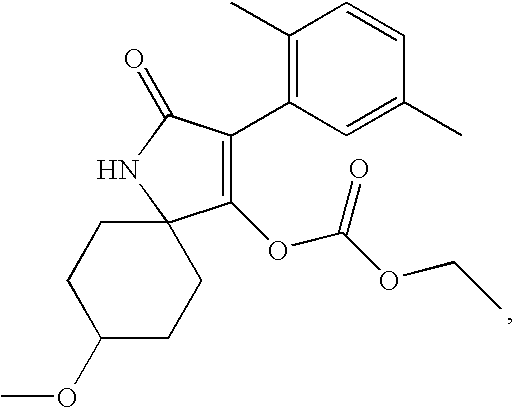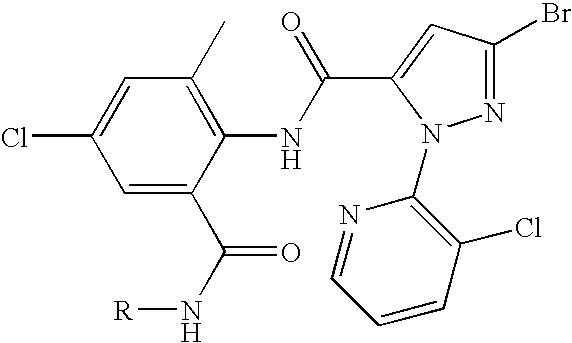Method for producing aqueous active substance compositions of active substances that are hardly soluble in water
a technology of active substances and compositions, which is applied in the field of preparation of aqueous active compound compositions of active compounds, can solve the problems of poor solubility of active compounds in water, difficult preparation, and difficult preparation, and achieves the effect of high stability and easy preparation of aqueous active compound compositions
- Summary
- Abstract
- Description
- Claims
- Application Information
AI Technical Summary
Benefits of technology
Problems solved by technology
Method used
Image
Examples
examples
General Preparation Protocol
a) Preparation of an aqueous suspension of active compound particles:
[0229]In a ball mill Drais Superflow DCP SF 12, the following components were ground together:[0230]125 g of active compound[0231]224.9 g of an aqueous 20% by weight strength solution of ethoxylated stearyl alcohol having a degree of ethoxylation of 25[0232]0.1 g of distilled water
[0233]Grinding was continued until the pigment particles had a mean diameter of 100 nm (owing to aggregate formation, the measured average particle diameter was initially 800-900 nm).
[0234]In a suitable reaction vessel, 25.7 g of the active compound preparation obtained in this manner were dispersed with stirring in 50 g of distilled water.
b) Polymerization of the monomers M1:
[0235]1.1 g of emulsifier solution 1 (40% by weight strength), 6 g of styrene (S), 2 drops of formic acid, 0.03 g of sodium hydroxymethanesulfinate and 0.04 g of a 70% by weight strength aqueous tert-butyl hydroxide solution were added to ...
PUM
| Property | Measurement | Unit |
|---|---|---|
| mean particle size | aaaaa | aaaaa |
| solubility | aaaaa | aaaaa |
| solubility | aaaaa | aaaaa |
Abstract
Description
Claims
Application Information
 Login to View More
Login to View More - R&D
- Intellectual Property
- Life Sciences
- Materials
- Tech Scout
- Unparalleled Data Quality
- Higher Quality Content
- 60% Fewer Hallucinations
Browse by: Latest US Patents, China's latest patents, Technical Efficacy Thesaurus, Application Domain, Technology Topic, Popular Technical Reports.
© 2025 PatSnap. All rights reserved.Legal|Privacy policy|Modern Slavery Act Transparency Statement|Sitemap|About US| Contact US: help@patsnap.com



